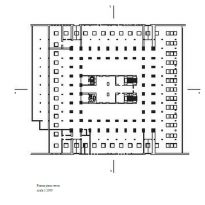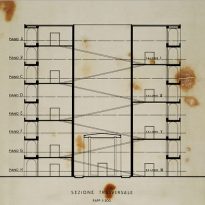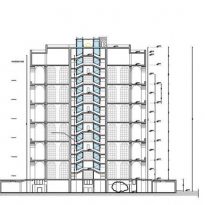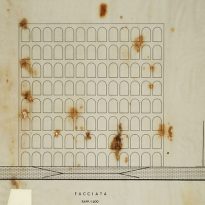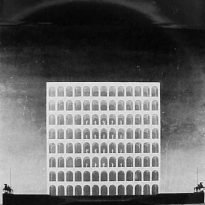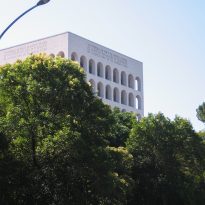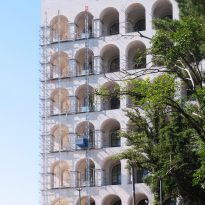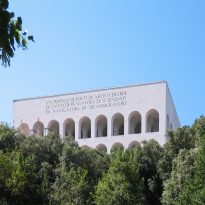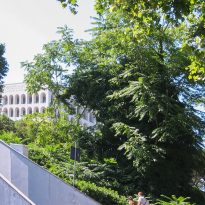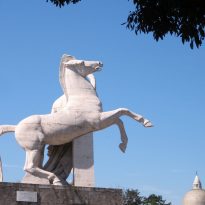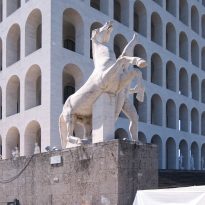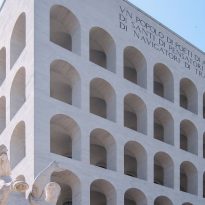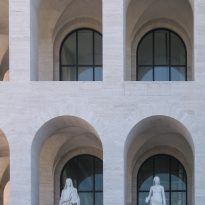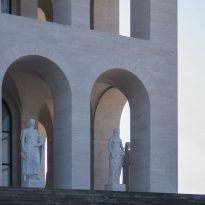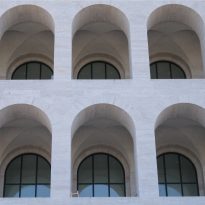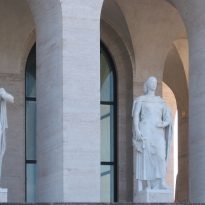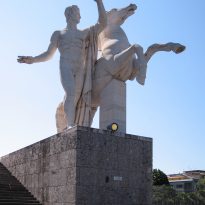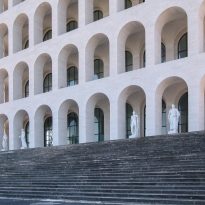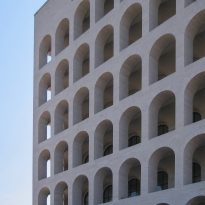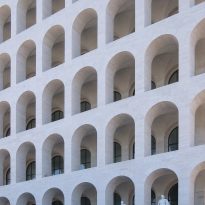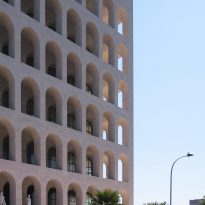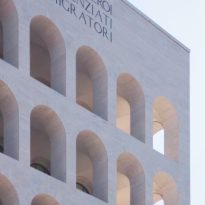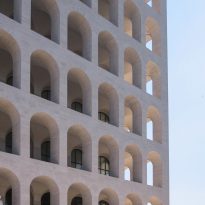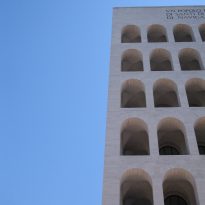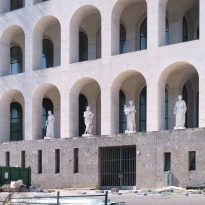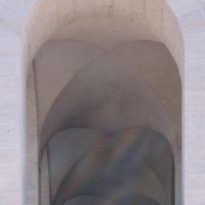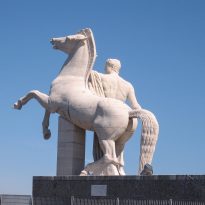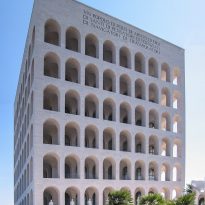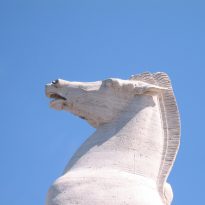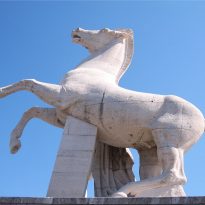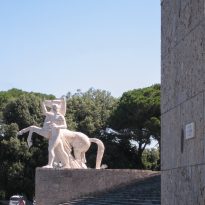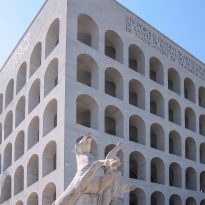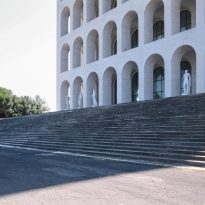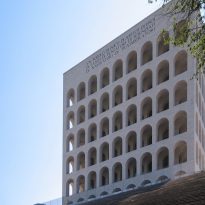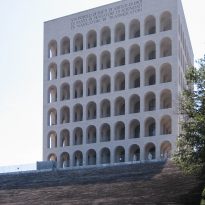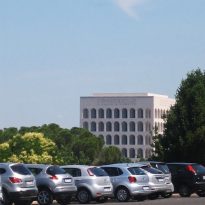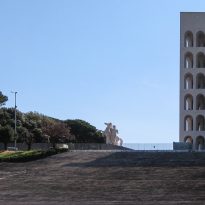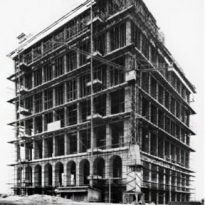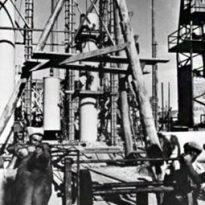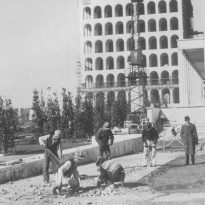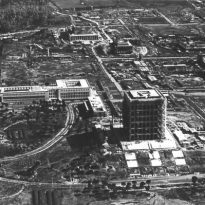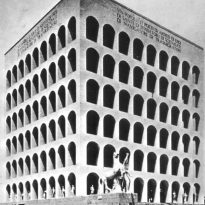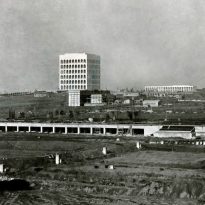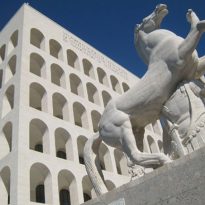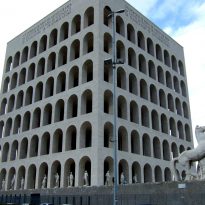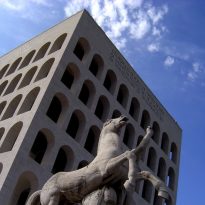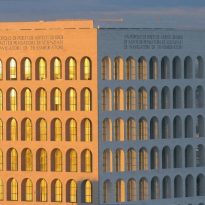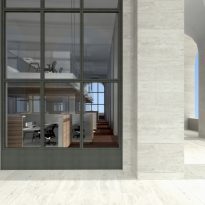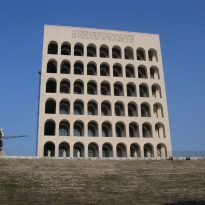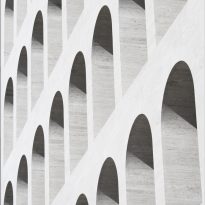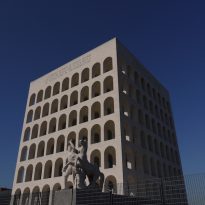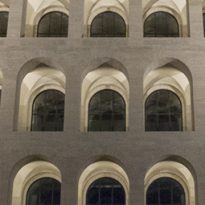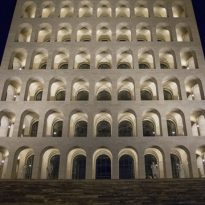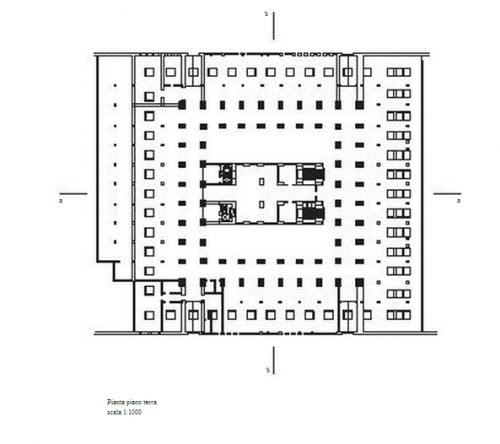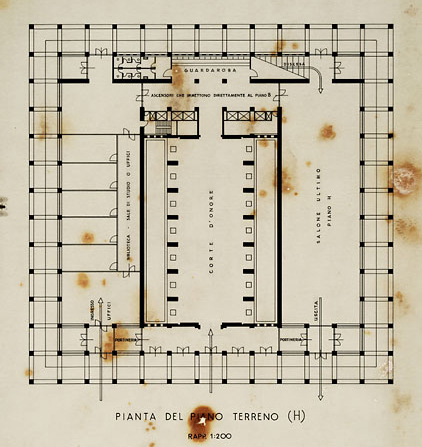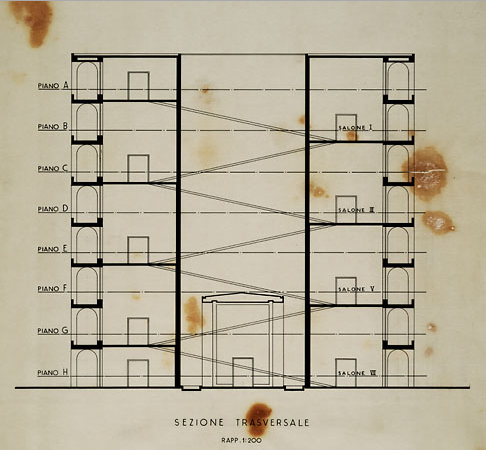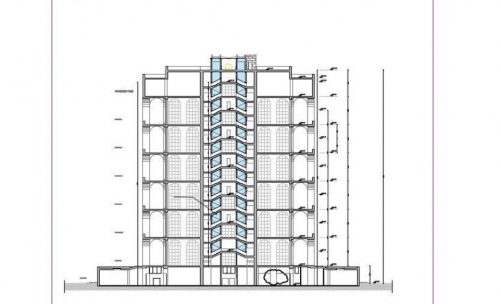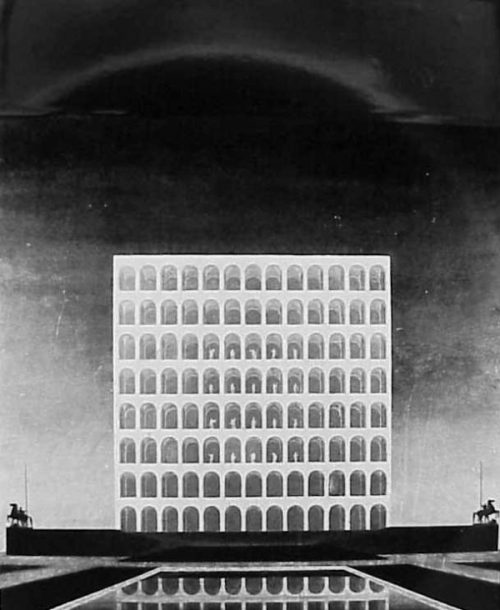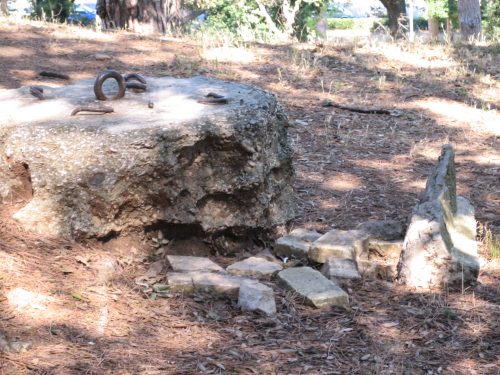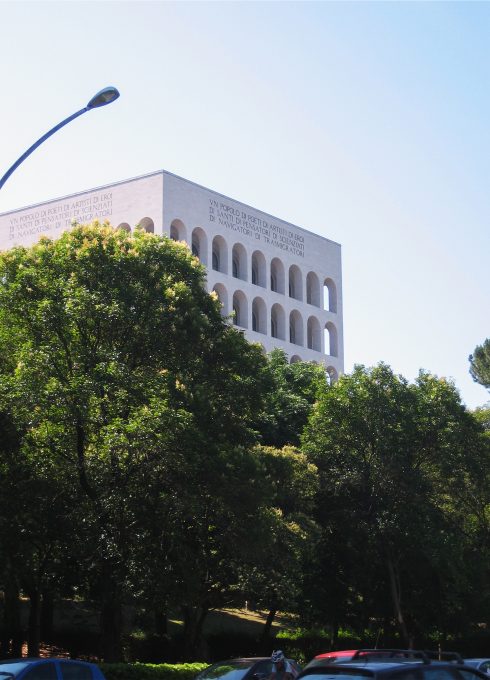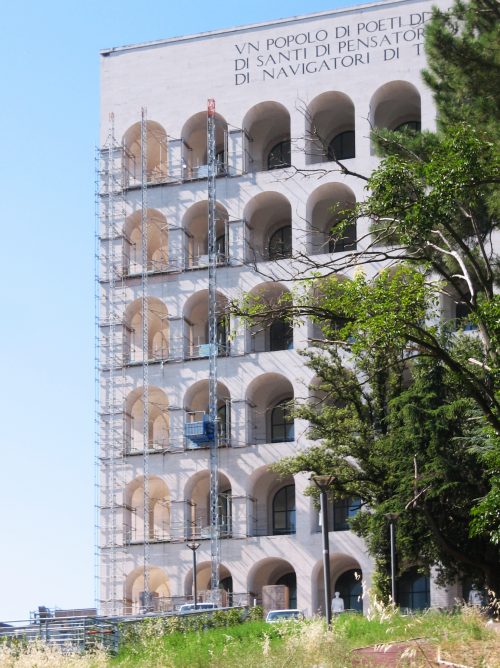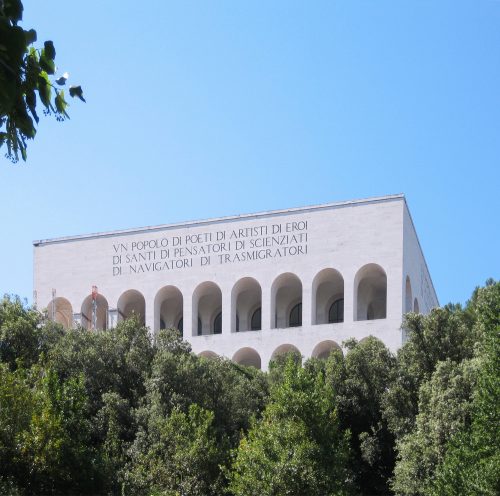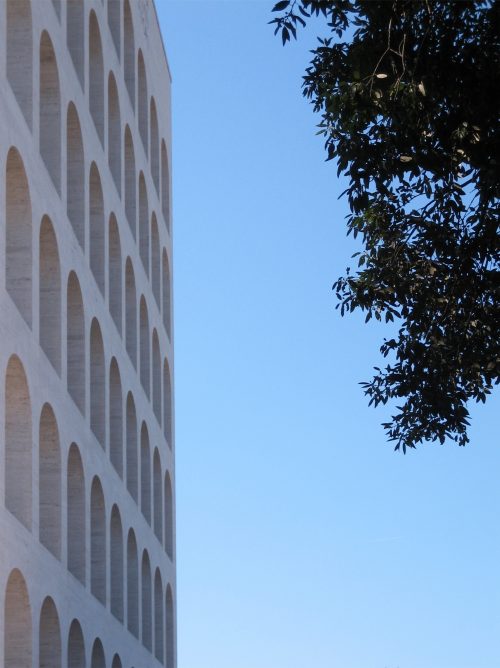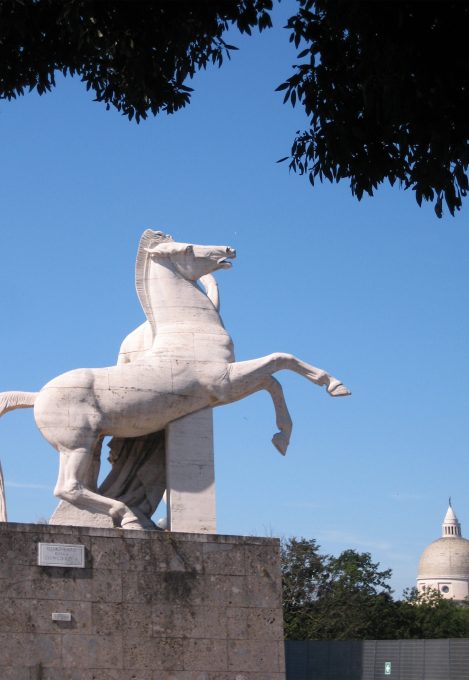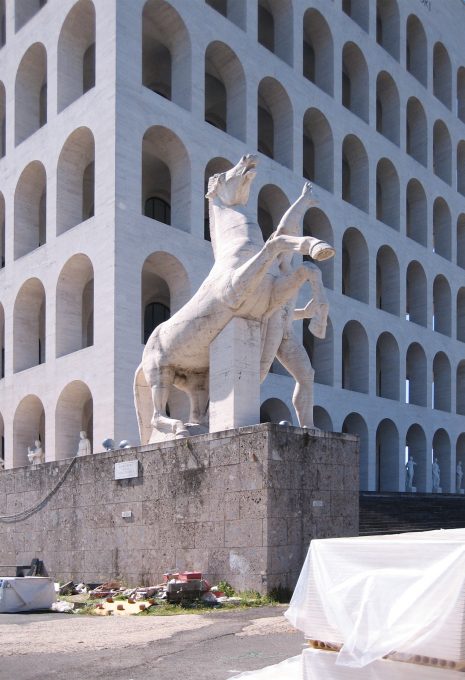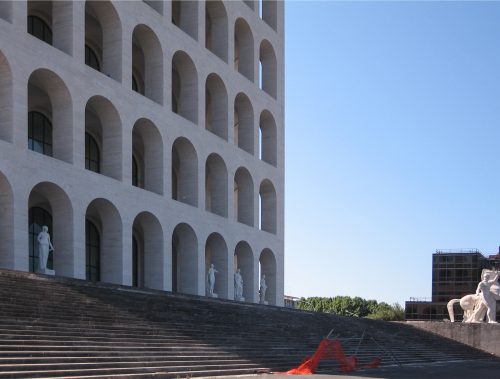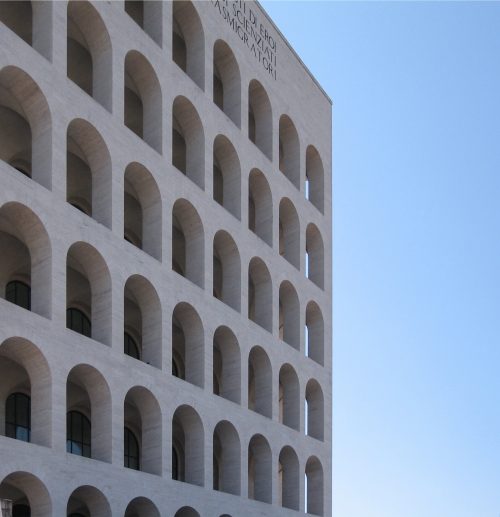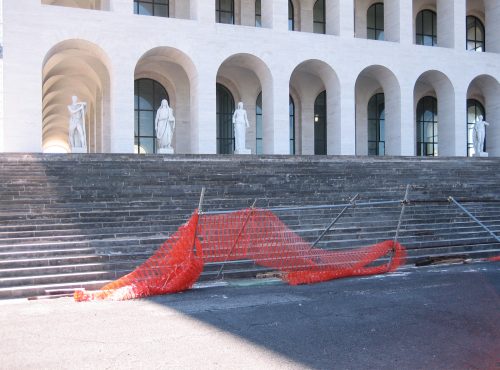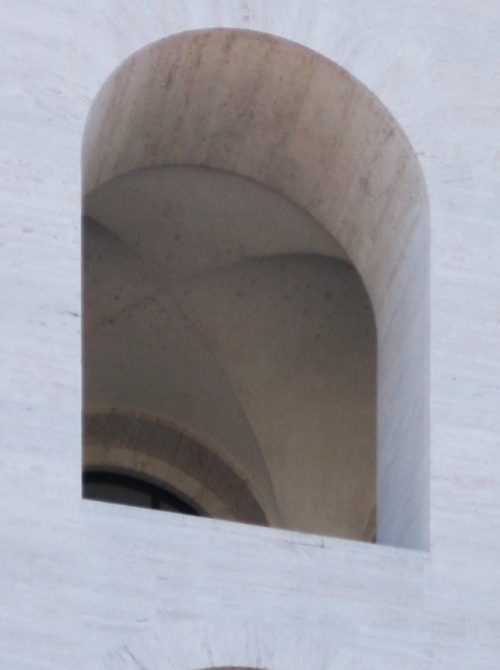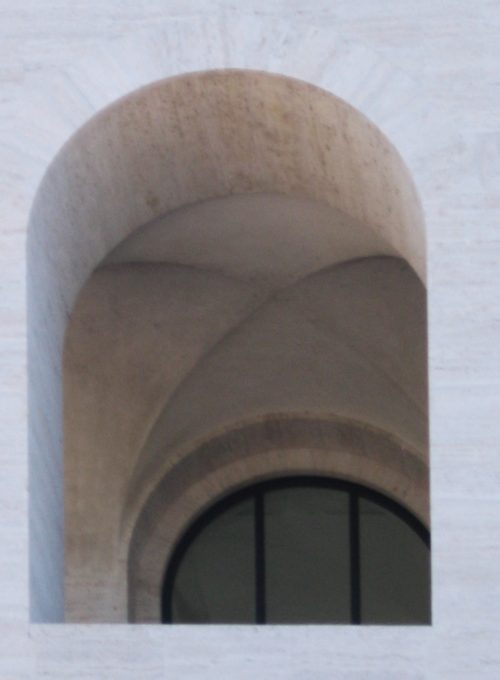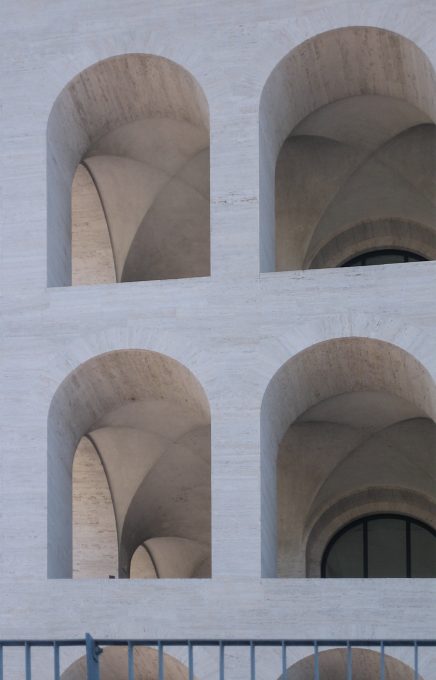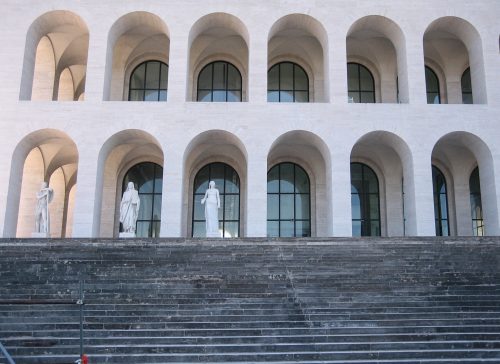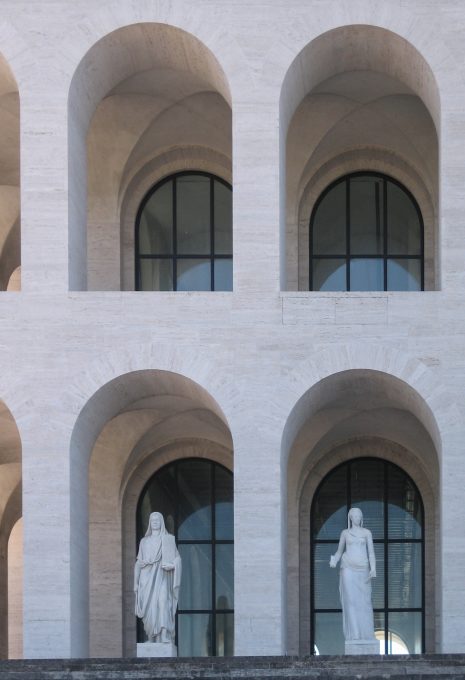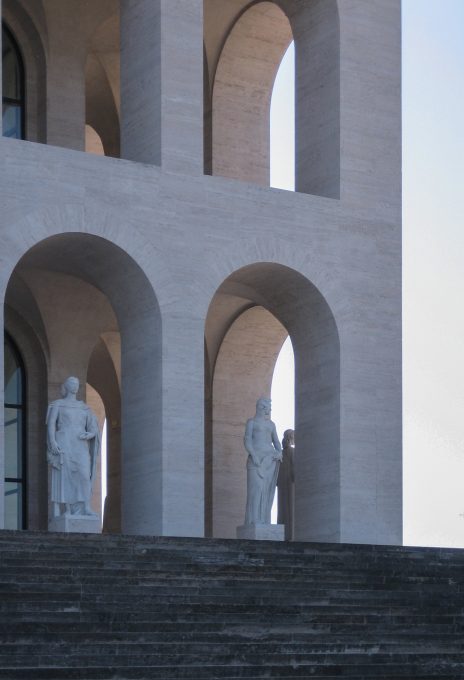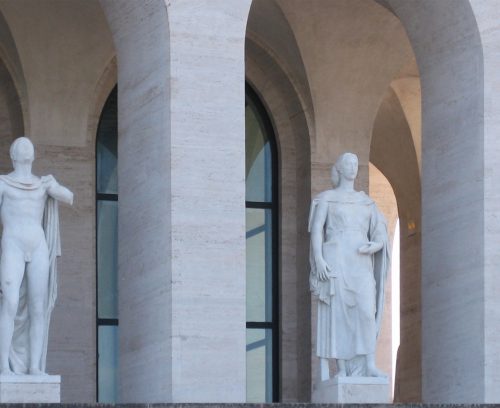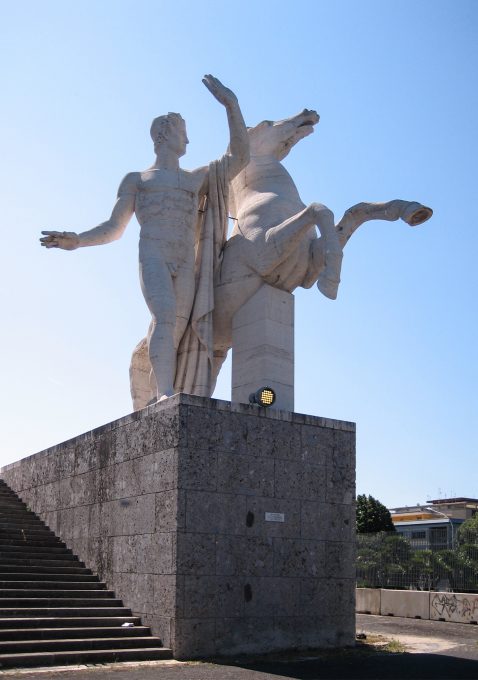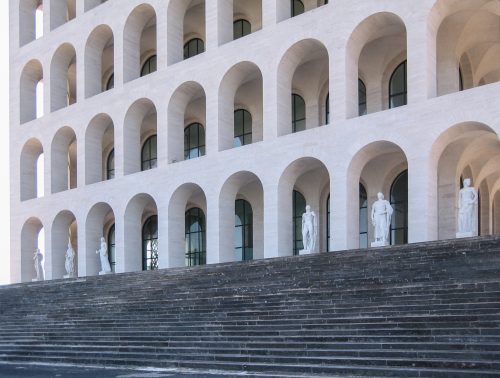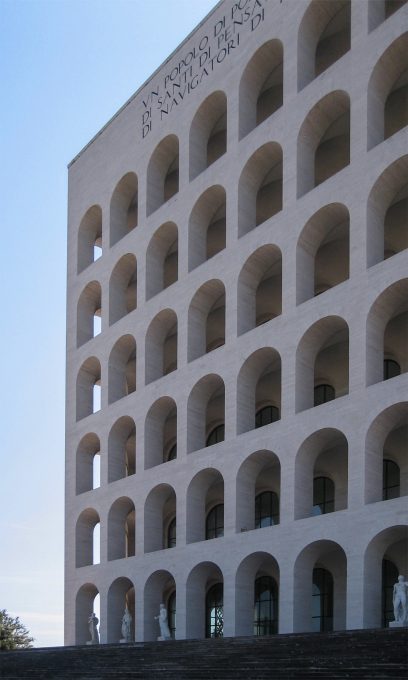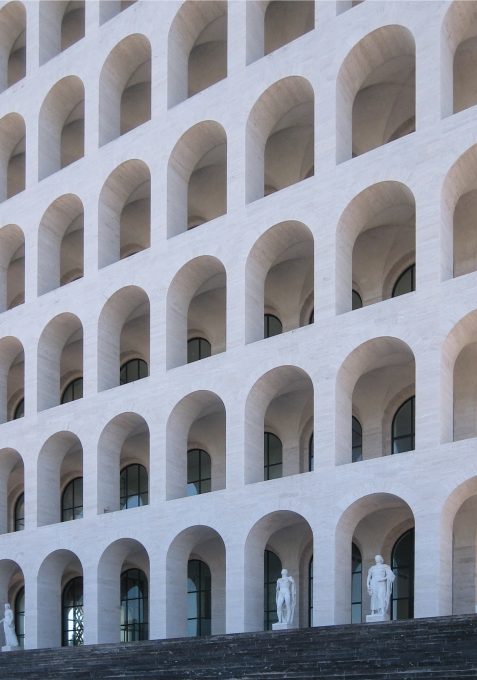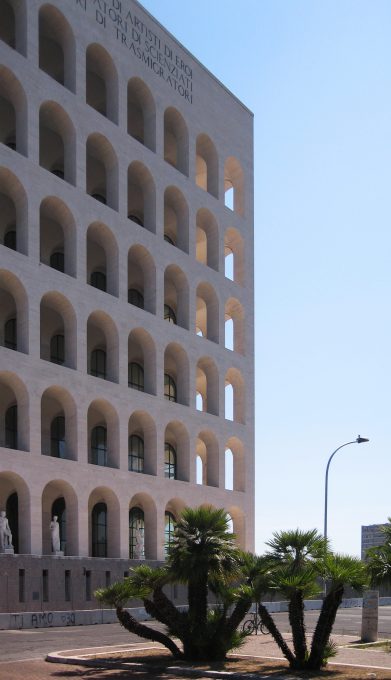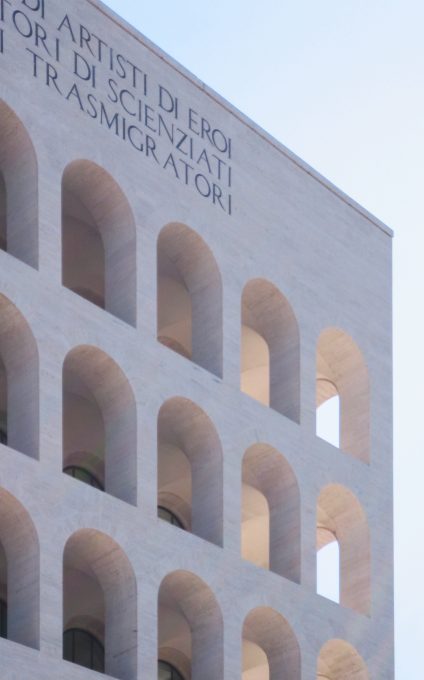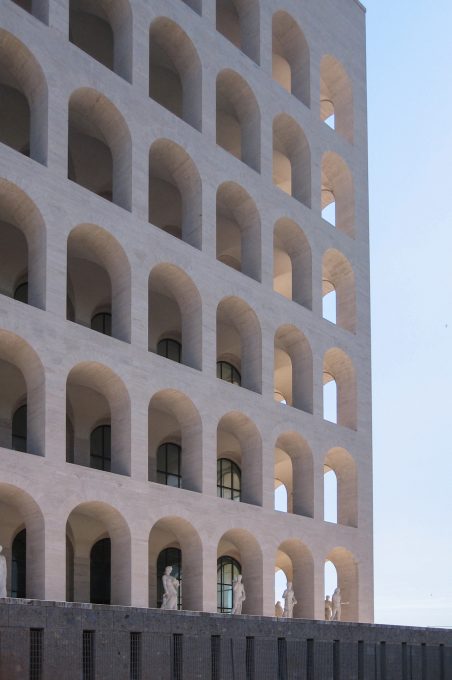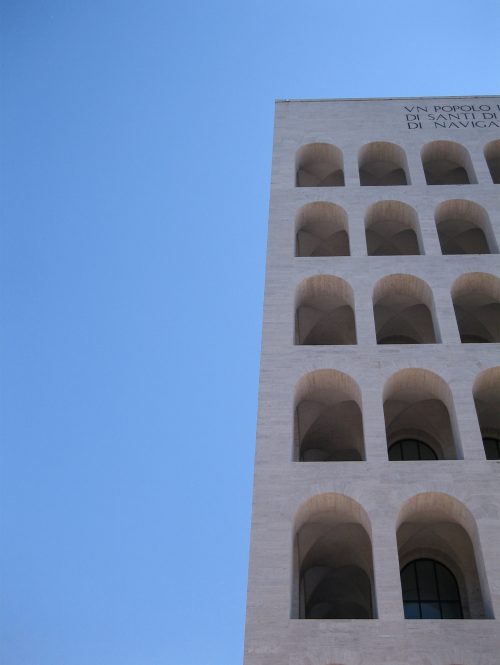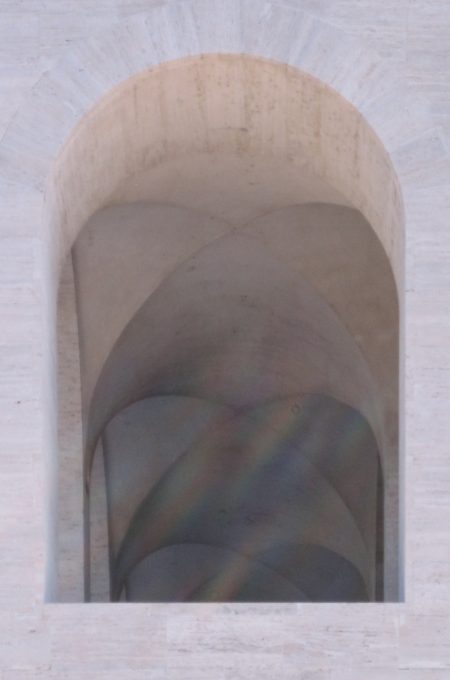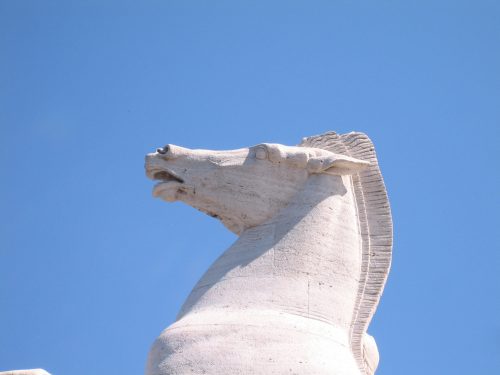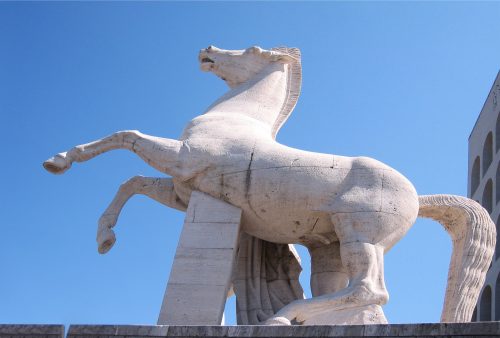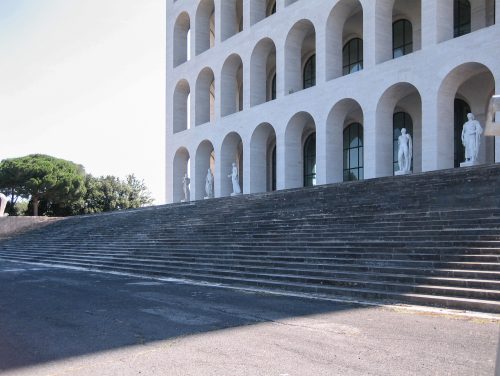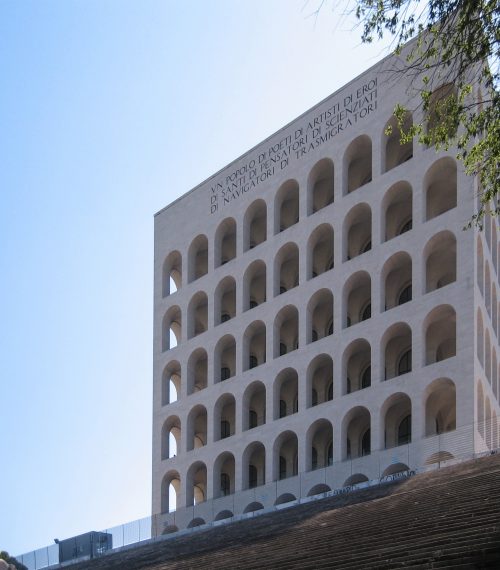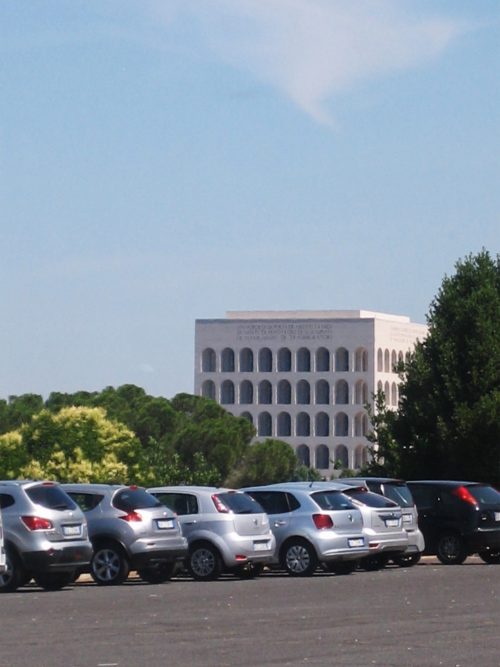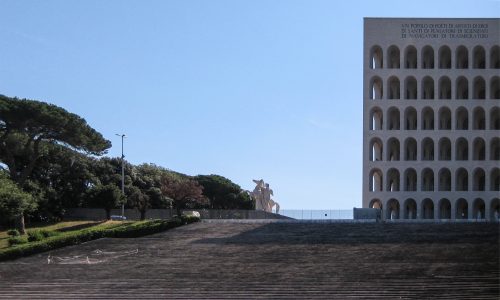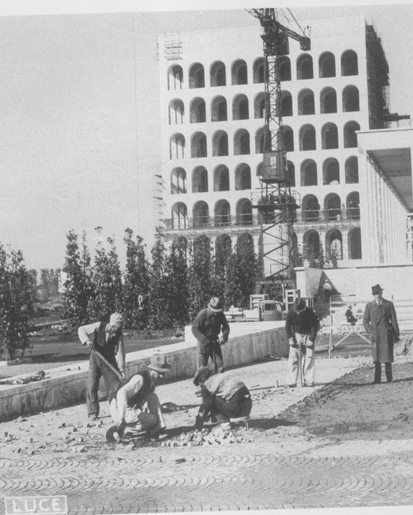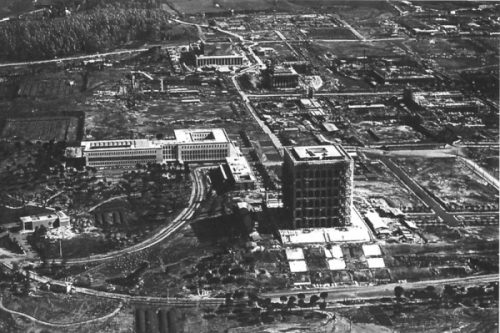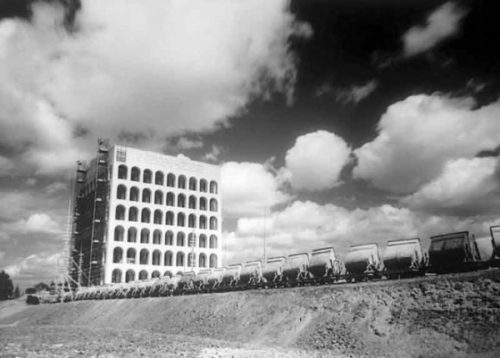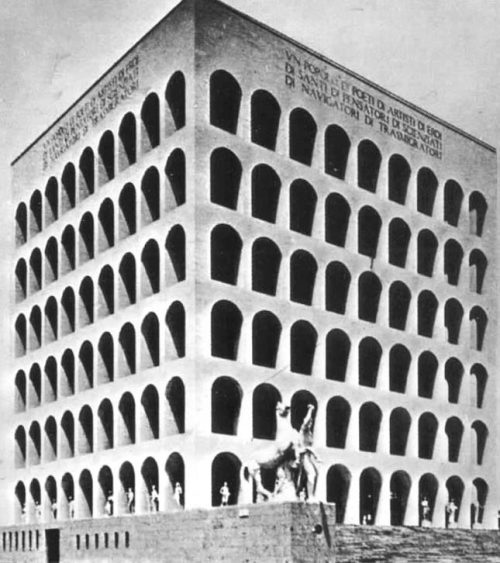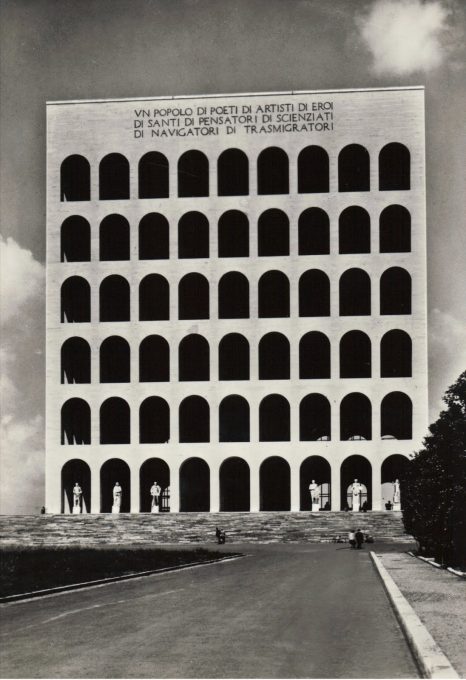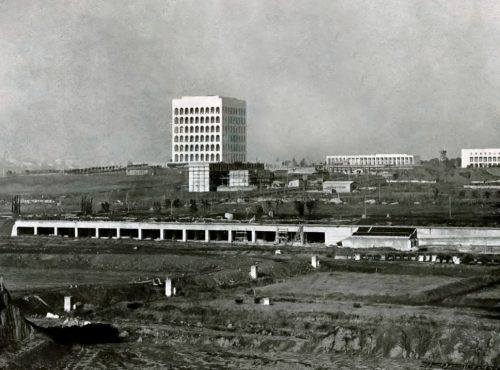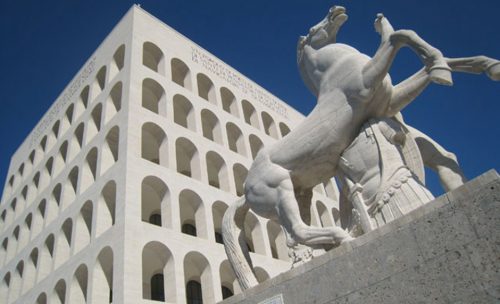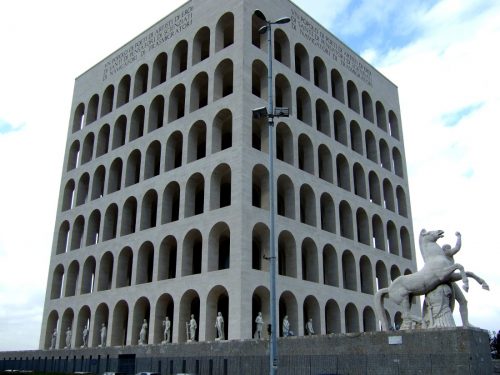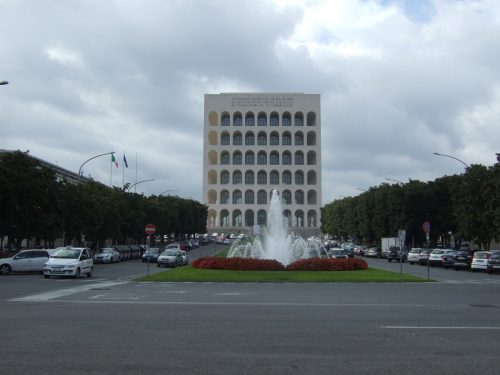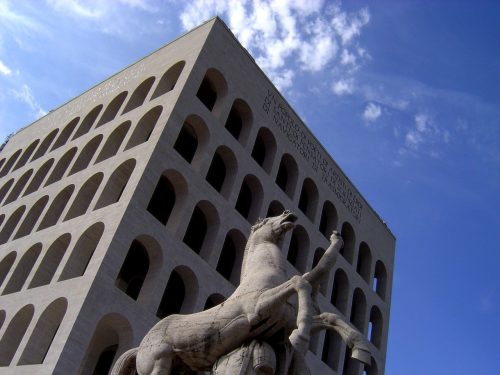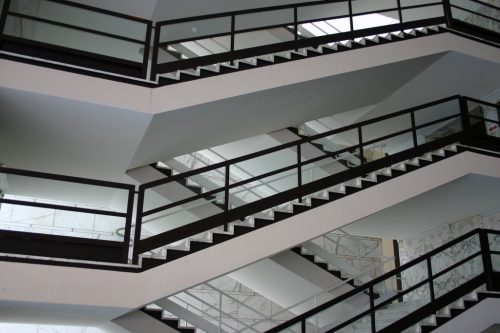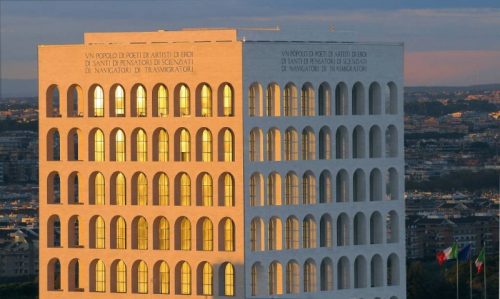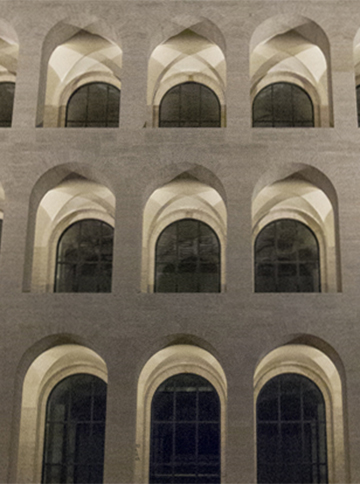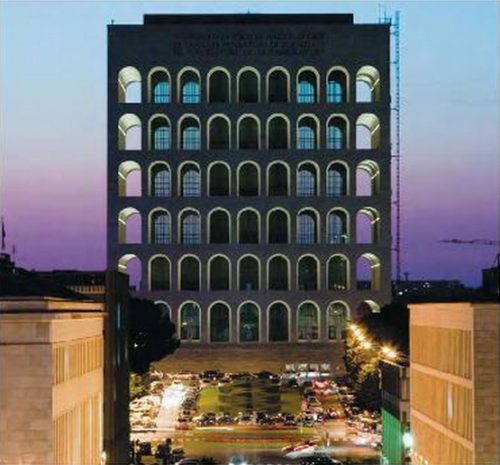Palace of Italian Civilization (Square Coliseum)

Introduction
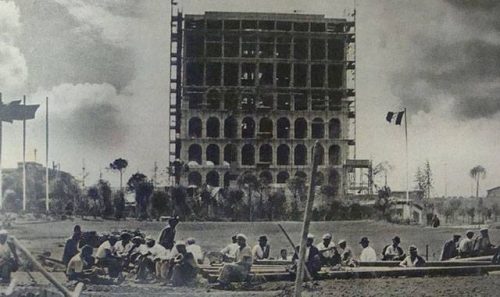
The Palazzo della Italian Civilization, also known as Palazzo della Civilization of Lavoto or Colosseo Quadrato ( Square Coliseum ) was commissioned by the dictator Benito Mussolini in 1935 to be the centerpiece of the Universal Exhibition of 1942 held in Rome
Its construction started in 1938 and although the exhibition was never performed due to the outbreak of the war its construction was completed in 1943 since become an icon of Fascist architecture.
Today the building serves as headquarters to the high-fashion brand Fendi, who signed a contract to operate the building for 15 years (starting in 2015) worth 2.8 million euros per year. The contract gives the brand the exclusive exploitation of the entire building except the ground floor which is still used to house various arts, culture and design to promote Italian cultural identity and brand “made in Italy” exhibition.
Location
The building is located in the district of Rome, Italy, known as ” Esposicione Universale Roma “, a name that recalls the origins of the master plan of the area, designed by staff architect Mussolini, Piacentini, but now the district is also called “E.42” or “EUR”.
The neighborhood is located about 10 miles south of the historic city center, and even if you are offline at the level of urban fabric, is well served by a major subway lines of the city opened in 1960 to mark the Olympic Games (EUR Magaliana stop).
After the fall of the regime was thought to demolish the whole neighborhood as it was considered one of the great symbols of fascism, but finally chose to give a new residential and administrative use. Currently the district is considered the financial district of Rome and continues to reinvent with new architectural works, among which is a reworking of Renzo Piano, the new congress center Fuksas Study, better known as “the cloud by Fuksas ” or expected Eurosky tower, a residential tower 120 meters high by architect Franco Purini.
Concept

The Palazzo is an exemplary model of the buildings in the neighborhood of EUR and what the Italian architecture, if the regime had not fallen, could have become, with monumental, symmetrical, strong, blunt and to the extreme rationalist architectural works could have become.
The design of the building is filled with symbolism. One of the most successful tracks on his inspiration is given by his nickname “Colosseo Quadrato”, as the Palazzo della Civillità Italian is a compliment to the ancient Roman Coliseum.
As in the ancient arena Palazzo is a solid volume, “pure” and filling a monumental scale, showing an overlay in front of lodges. Specifically six levels are distinguished by front 9 arches each, number believed to allude to the name (Benito with 6 letters) and Surname (Mussolini 9 letters) dictator who commissioned it.
On the ground floor arches provide shelter to 28 statues of 3,4 meters high each, in carved marble Ferrara, representing every industry accepted at the time.
Spaces
The volume is elevated on a podium or solid base that can be accessed by two staircases located on two opposite walls of the cube. Once inside the structure however all perception of the scale and monumentality of the work is lost.
The ground floor remains flexible and hosts various exhibitions throughout the year, always aimed to promote brands and Italian industries within the framework of the “made in Italy” campaign which aims to raise the profile of the products and culture of the country.
The remaining upper floors have been converted into offices.
Materials
The predominant material is undoubtedly the travertine marble that completely covers the four facades of the cube and the socket that supports it.
Behind this first facade are marble glass enclosures which delimit the interior spaces of the outer perimeter of building lodges.



